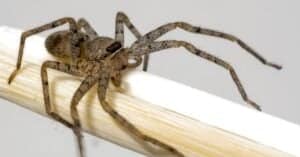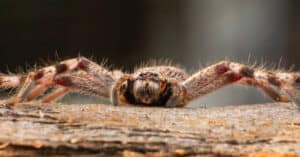You might think you know what a black widow spider looks like, but do you know for sure? There are a few lookalikes that can be a relief if you encounter them instead of a true black widow spider. Some other ones on this list might not give such relief. Below are a few common cases of mistaken identity when it comes to black widow spiders, and how you can tell them apart from each other.
The Black Widow (Latrodectus spp.)
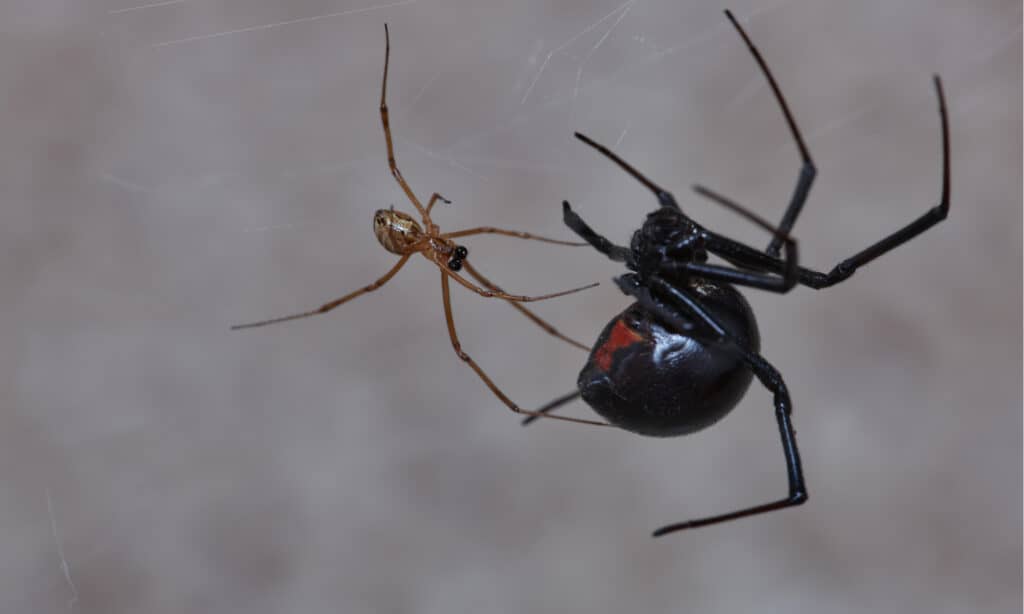
Male and female black widows do not look very similar at all, but the females are much more obvious and easy to identify.
©lighTTrace Studio/Shutterstock.com
First, let’s get acquainted with a black widow spider. The females and males look different from each other, which can complicate positively identifying a male from the female. Female black widows will have the tell-tale bright orange or red hourglass shape on the undersides of their abdomens. Sometimes this shape is just a triangle. On top, they will sometimes have red or orange spots. Their abdomens are rounded, black, and shiny. Their legs are long, but not as long as their male counterparts. Female black widow spiders mostly hang out in their webs, which are haphazard in appearance compared to more put together and picturesque webs other spiders weave.
Male black widows are actually a brown color and do not have characteristic markings. They’re smaller than the females, too. The males rarely attack or bite, as opposed to the females which are aggressive and ready to attack. If you’re bitten by a black widow, know that in most cases it is not fatal. This doesn’t mean it’s pleasant. Nausea and vomiting, muscle pain or stiffness, weakness, sweating, and rashes are all par for the course when the venom from this spider gets into a human body. Washing the area with soapy water and monitoring it is the recommendation. If symptoms are serious, getting in touch with a doctor to receive anti-venom can help with the symptoms.
Now that we know some of the basics, here are the imposters that at first glance might appear as a black widow:
1. False Black Widow (Staetoda grossa)

©Danie Spreeth Photography/Shutterstock.com
A false black widow is named very appropriately. It can be very difficult to distinguish this species from the true black widow spider. One indication is the shape: false black widows are much more oval in shape than round. This species is dark in color, but the color is slightly more brownish than black, and the markings are not bright like in a black widow. Instead, they’re light yellow or grayish. This marking can look like a crescent but in many instances, it is faded.
Don’t rely on size alone to tell these two species apart. Black widows are usually about half an inch long, not including their legs, as are the false black widows. These spiders are common house spiders, with a common name for this species being “cupboard spider”. They’re most often found in coastal states along both the Pacific and Atlantic oceans, and are also common inhabitants of European countries and, of course, Australia.
The false black widow can inflict a painful bite that is similar to that of a black widow, but less severe. Symptoms can include swelling, pain at the bite site, and lethargy.
2. Redback Spider (Latrodectus hasselti)
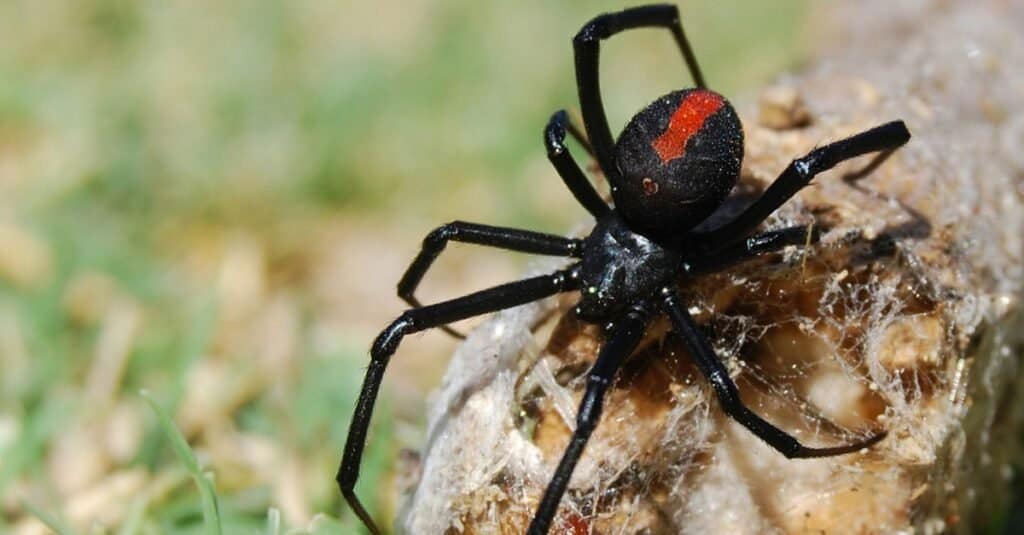
The
redback spider
can be a deadly spider easily confused for a black widow, but the black widow is more venomous.
©iStock.com/maria72
Redback spiders are found all across Australia and are responsible for the most spider bite-related deaths. However, after the anti-venom was introduced, there have been no recorded deaths from this species.
A black widow and redback spider both share a glossy black appearance and characteristic red markings. The red markings on the redback spider are a stripe on the upper abdomen and confusingly, an hourglass shape on the underside. Males are also smaller than the females and do not sport the fashionable black coloring, but do have the same hourglass shape and stripe. Here, size might come in handy in recognizing them. Females are about pea-sized, not including their legs.
3. Brown Widow (Latrodectus geometricus)
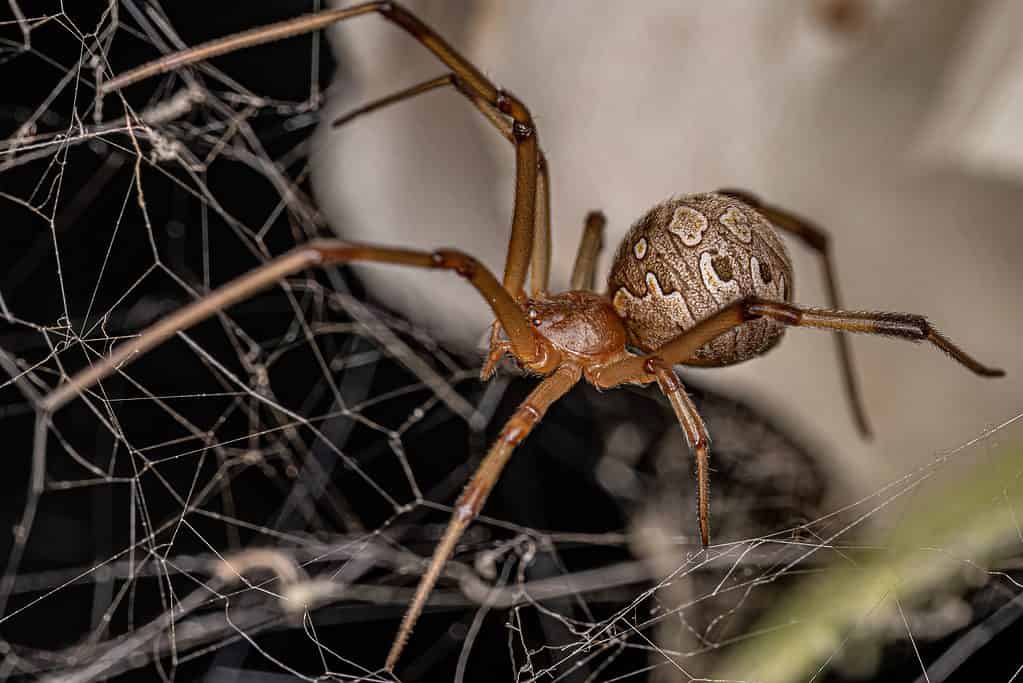
When the brown widow is truly brown, the differences are easy to see. The abdomen has more geometric marking than that of a black widow.
©Vinicius R. Souza/Shutterstock.com
As the name suggests, brown widows are most easily distinguished from black widows by color. Brown widows are a more mottled brown or tan color with black accents. Immature black widows might be harder to tell apart from the brown widow due to this coloration. Brown widows do not have the bright red hourglass shape, though an hourglass shape is present. It’s orange in this species.
The abdomen also has longitudinal stripes. This species is one of the more easy species to tell apart on-sight as long as you’re looking at a mature specimen. There are some members of this species that have a much darker brown coloration, close to black, which can throw a wrench into your identification plans. If this is the case, a surefire way to positively identify a brown widow is a lack of shine to their color. If you’re able to look close enough, you’ll also notice the orange hourglass. Though this might be too close to comfort for most!
4. Noble False Widow (Steatoda nobilis)
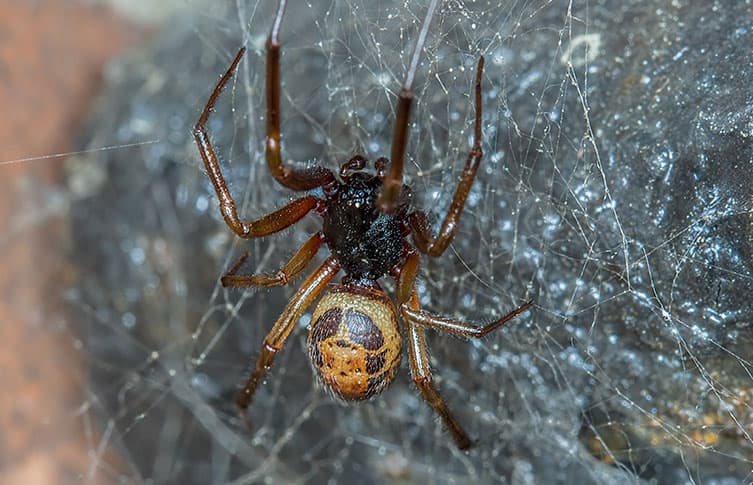
This species of spider will always have brown or deep red legs.
©thatmacroguy/Shutterstock.com
The noble false widow has a pentagonal or skull-shaped pattern on its abdomen which is the most obvious difference between this species and black widows. They’re around the same size as black widows, but male noble false widow spiders have a more elongated abdomen than the black widows and females of their own species. A thin white band can be seen in most members of S. nobilis that can also be used to differentiate from a black widow.
Unlike the black widow, these spiders do not have any significant toxicity to their venom. They are invasive in the UK and are thought to have originated from the Canary Islands where they hitched a ride in cases of bananas overseas.
5. Red Widow (Latrodectus bishop)
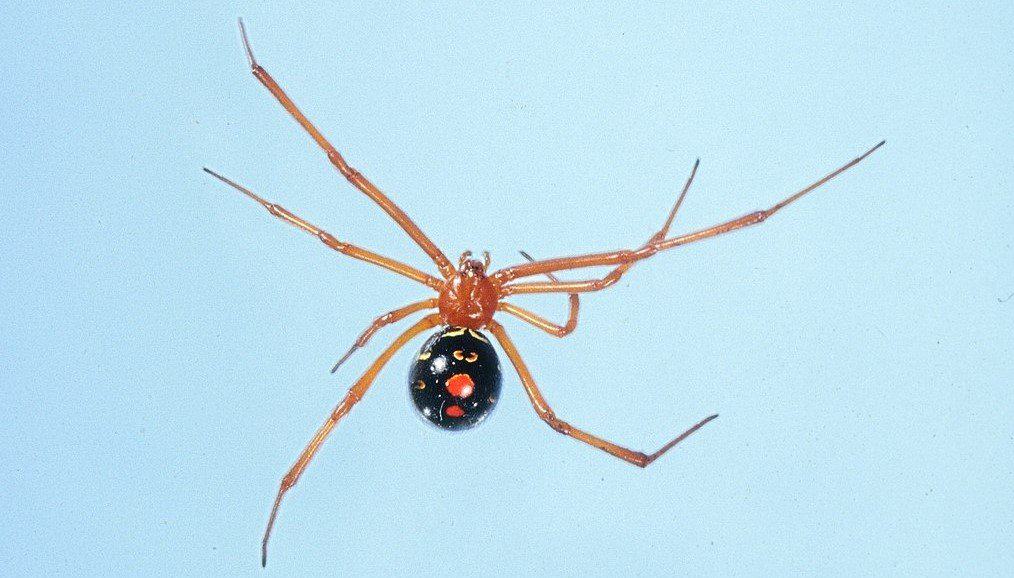
This species is quite venomous, as are the other members of its family, which include the black widow itself.
©Florida Division of Plant Industry Archive / CC BY 3.0 US, via Wikimedia Commons – License
The red widow might be one of the easier species to tell apart from the black widow, and the giveaway is in the name. Red widows have brightly colored head bodies and a black abdomen. The abdomen does have bright red spots and but lacks a complete hourglass on its underside. Size-wise, they are about the same as a black widow, with males also being about one third of the female’s size.
Red widow spiders are a rare species to encounter. This species is mostly found making its web outside in dry or scrubby areas. They might exclusively live in Florida, with little to no presence elsewhere in the country or possible the world.
A bite from this spider can cause muscle spasms or weakness. Other symptoms of a bite are in-line with that of a black widow.
6. Barn Funnel Weaver (Tegenaria domestica)
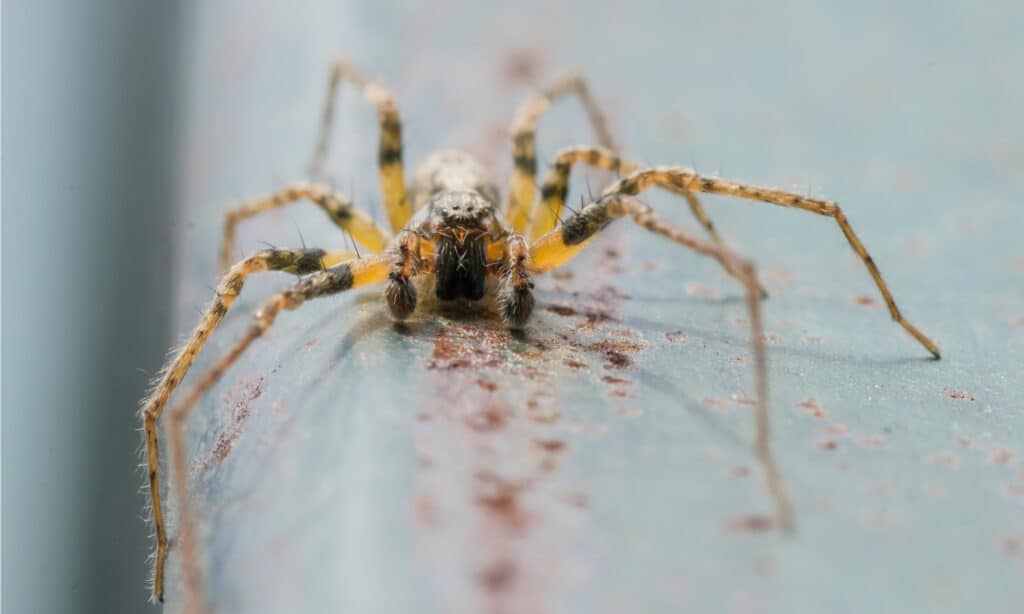
The barn funnel weaver spider might have a lifespan of up to seven years, which is very impressive for a little spider. Black widow spiders have a lifespan of one to three years.
©Korovko Gleb/Shutterstock.com
This spider does not share too many characteristics with a black widow that would make them difficult to tell apart. Females are just under half an inch long (body only) which is about the same as a black widow. These spiders are a deep brown or tan color and have a black or grey herringbone pattern on their abdomens.
Their webs are funnel-like, which gives some creedance to their common name. Barn funnel weavers are relatively shy, though coming across one of these in your shed or basement will likely give you a bit of a fright. They would rather quickly run away than bite an unsuspecting person. In fact, there have not been any documented bites from this type of spider at all!
Summary of Lookalike Spiders to the Black Widow
| Spider | Distinguishing Features from Black Widow |
|---|---|
| 1. False Black Widow | Oval shaped body, no distinguishing red marking. |
| 2. Redback Spider | Smaller in size than a black widow with a restricted geographic range; mostly found in Australia and New Zealand. |
| 3. Brown Widow | Brown color rather than black; does not have a glossy or shiny appearance. Geometric markings on the abdomen are pronounced on lighter colored individuals. |
| 4. Noble False Widow | Pentagonal markings on abdomen and lighter overall body color. |
| 5. Red Widow | Bright red head and body with circular red pattern on black abdomen. |
| 6. Barn Funnel Weaver | Herringbone pattern on abdomen. |
The photo featured at the top of this post is © Jay Ondreicka/Shutterstock.com
Thank you for reading! Have some feedback for us? Contact the AZ Animals editorial team.




